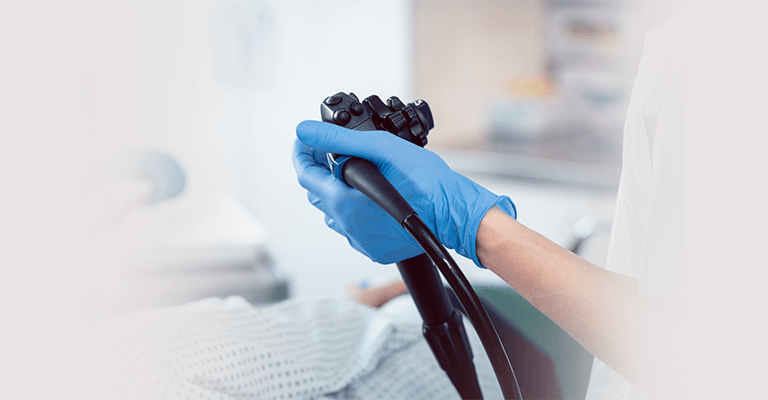

Colonoscopy
Colonoscopy is a type of endoscopic examination that uses a flexible tube, known as a colonoscope, to visualize the condition of the large intestine (rectum and colon).
It represents the gold standard for detecting polyps and colorectal cancer. The procedure is safe and effective for evaluating the state of the large intestine.
When is colonoscopy recommended?
A gastroenterologist may recommend colonoscopy to investigate changes related to bowel function.
Colonoscopy is typically recommended when the following symptoms are present:
- blood in the stool or rectal bleeding
- chronic diarrhea or chronic constipation (including sudden changes in bowel habits)
- chronic difficulty with bowel movements
- suspicion of intestinal obstruction
- elevated risk of colorectal disease due to a chronic bowel condition or family history of bowel disease
- unexplained weight loss with symptoms related to bowel function
- as a follow-up to a previous colonoscopy
Colonoscopy is the best way to diagnose and prevent colorectal cancer.
Anatomy of the large intestine
The large intestine is the final part of the digestive system, and its role is to absorb water to solidify waste material (stool).
The large intestine can be anatomically divided into the following four sections:
- Ascending colon: extends upward on the right side of your abdomen
- Transverse colon: extends from the ascending colon across the body to the left side
- Descending colon: extends from the transverse colon downward on your left side
- Sigmoid colon: extends from the descending colon to your rectum
The rectum connects to the anal opening, where stool exits your body.
How is colonoscopy performed?
Colonoscopy takes between 25 and 45 minutes. Most people receive mild anesthesia or sedation to reduce discomfort.
You will be positioned lying on your left side. The doctor carefully inserts the colonoscope through the anal opening and slowly advances it into the large intestine, later withdrawing it to allow a detailed examination of the colon’s lining. Air is also pumped into the large intestine to aid the doctor in a careful examination of the lining.
During this procedure, the doctor may remove polyps (small tissue growths that can develop into cancer) and take small tissue samples (biopsies) for further testing in the laboratory.
What happens after the procedure?
After the procedure, you will feel drowsy due to the sedation used, so it is necessary to have someone with you to drive you home. You should expect a full recovery the following day. Your doctor will provide advice on post-procedure diet.
Note:
After receiving sedation, it is important NOT to:
- drive a vehicle for at least 24 hours
- operate machinery for at least 24 hours
- engage in any other activities that may pose a risk.
Are there any complications?
When this procedure is performed by highly skilled experts who are experienced and properly trained, such as gastroenterologists at Tesla Medical Clinic, the risks of complications during colonoscopy are minimal.
Complications of colonoscopy, similar to any other procedure, may include:
- bloating
- gas
- minor bleeding if polyps are removed or tissue samples are taken (rarely).
Very rare adverse effects may include:
- bleeding
- infections
- perforation of the intestinal wall.





